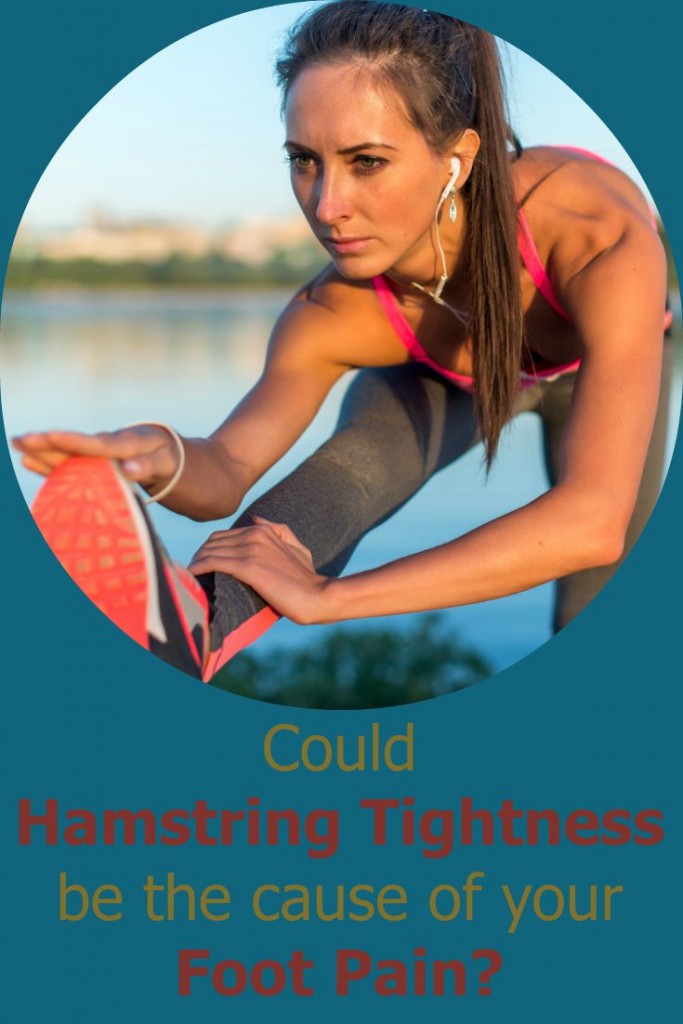 How often do you really stretch your legs out?
How often do you really stretch your legs out?
Ever since a large research study by the United States Track and Field demonstrated that pre-run stretching had no effect on injury rates,1 its popularity has been going downhill.
Stretching before a workout would also probably slow you down, since it detracts from the legs’ “springiness.” So, does stretching belong in the garbage bin of outdated training techniques?
Today we’ll examine a pair of studies that might help repair its reputation in the running community. Both concern the interplay between the hamstrings, the long, meaty muscles that run down the back of your thigh, and the mechanics of your foot.
The research on hamstring tightness and gait impact
The hamstring is the targeted muscle in the classic “runner’s stretch”— one leg propped up on a surface with the arms wrapped around the foot.
The first study was a very clever investigation that simulates hamstring tightness carried out by J. Harty and co-workers at Cappagh Orthopedic Hospital in Ireland.3
Hypothesizing that a tight hamstring could reduce the foot’s loading capacity, Harty et al. fit 15 healthy volunteers with an articulated Don-Joy mechanical knee-brace, the plastic and metal over-the-knee hinge you sometimes see on football players or other athletes with recent knee injuries.
The researchers set each brace to allow varying degrees of knee extension, which simulated various levels of hamstring tightness. The researchers measured the force of the participants’ feet as they walked and made contact with a pressure plate.
The limited knee extension, akin to tight hamstrings, measured greater pressure under the forefoot during the stance and push-off phase, and contact duration was abbreviated, likely due to the walkers “hitching” their leg up early, not pushing off with full knee extension.
How does hamstring tightness relate to plantar fasciitis development?
The researchers measured another group of 15 subjects, except this time, they were suffering from plantar fasciitis, a painful injury to the arch that is one of the most common running injuries. Harty et al. found that the injured patients had limited knee range of motion linked to hamstring tightness, suggesting that the tightness in their hamstrings induced greater forces in the foot, predisposing them to injury.
The finding was confirmed in a 2011 study by Jonathan Labovitz, Jenny Yu, and Chul Kim at Western University of Health Sciences.4 Very much like the second part of Harty et al.’s study, Labovitz, Yu, and Kim examined the hamstring tightness of a group of healthy and injured patients by measuring their knee range of motion.
Again, the researchers found that hamstring tightness was present in a large number of plantar fasciitis sufferers.
In fact, after controlling for other variables, like BMI and calf tightness, the study demonstrated that having tight hamstrings made you nearly nine times as likely to suffer from plantar fasciitis.
How could the research findings impact runners?
Fortunately, because of Harty et al.’s study, we have some insight into the actual mechanism of injury.
Because having tight hamstrings seems to increase loading on the forefoot and negatively impact your walking gait, it is not a stretch to assume that this will apply to running as well.
If anything, running requires more knee range of motion, and hamstring tightness in runners would probably lead to an even more abnormal forefoot loading level.
This could impact not only plantar fascia injuries, but a whole host of conditions of the foot and ankle, not to mention performance.
How prevalent are tight hamstrings? A better question might be, who doesn’t have tight hamstrings? Sitting in a chair all day, driving your car, and doing almost every other “normal” activity in our daily lives puts our hamstrings in a shortened position.
It is highly likely many or even most people have some degree of hamstring flexibility limitation, so consciously stretching out your hamstrings makes a lot of sense.
When is the best time to stretch?
Probably after you are done running, because you won’t need the snappiness and responsiveness of an unstretched muscle.
So, think about adding some good hamstring stretches to your post-run routine, especially if you feel that you already have tight hamstrings or if you have a history of plantar fasciitis or other foot problems. Of course, you don’t need to do just static stretching either. You can implement active isolated stretching (AIS), yoga, mobility exercises, and drills too. Here’s a great resource on expanding your concept of flexibility.
Exclusive bonus: Download our full High Hamstring Recovery and Prevention Routine. It’s a PDF with images and descriptions of the 10 most effective prevention and rehab exercises for runners with High Hamstring issues. Download yours for free here.









4 Responses
Good Article and research! I have never had any hamstring issues which I attribute to keeping them in range of motion from yoga & stretching. Sometimes I can not believe other runners can even run with such limit hamstring ROM and tightness.
Great article! I suffered from PF for about 2 years it terrible!
I don´t have access to the articles. But when it comes to linking tight hamstrings to PF, how can we be sure that the tightness isn´t just a way for the body to adapt to the PF?
Hi Johnny, which article are you unable to access? We would be happy to email it to you if you like? Or you could sign up to our newsletter, and will get all the latest information (without spamming :P). We never really want your body to just adapt to PF, we want to keep runners healthy and with as little tightness throughout their bodies as possible. Therefore we like to suggest ways to reduce the tightness and injury issues, which is what we were trying to convey in this post! All we share is what we find in research 🙂